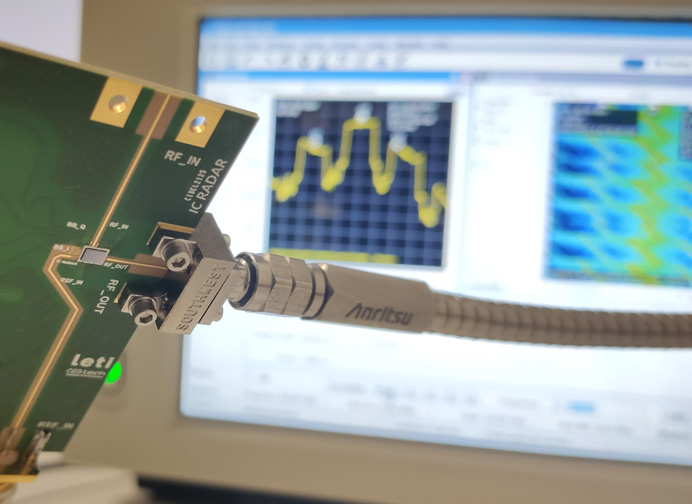Meeting the requirements of demanding markets
The markets for non-invasive vital sign monitoring are expanding into new territory. Medical device manufacturers are no longer the only companies interested in integrated radar-on-chip transceivers. The automotive industry is also on the lookout for in-cabin solutions to detect forgotten babies and pets and monitor driver and passenger health. Whatever the market, the devices and their antennas must be very compact and lightweight while delivering extreme ranging precision, high spatio-temporal resolution, and low mean power consumption.
New architecture and original frequency multiplication technique yield excellent results
The main objective of this research was to validate the operation of a new radar transceiver architecture capable of delivering low phase noise, fast chirp signal generation, and low operational duty cycles. In terms of precision, our benchmark was based on conventional echocardiography, which meant being able to measure object displacements of 10 µm at a repetition rate of around 1 kHz. The main integrated circuit design obstacle was to achieve operation in the 60 GHz band with low power and low phase noise starting from a 2 GHz carrier signal. Traditionally, 10 GHz signals are converted to mmW frequencies to do this. Here, we introduced an innovative mmW FMCW radar signal generation technique utilizing a periodically repeated oscillation train (PROT) and injection-locked oscillators (ILO), enabling frequency multiplication rates exceeding 30X from low-frequency synthesizers.
Unparalleled chirp modulation for extremely sensitive radar sensing
We obtained chirp modulation rates as high as 30 GHz/µs on a 60 GHz carrier, with exceptional phase noise performance. This is the steepest chirp slope known for mmW radar systems to date. The low-frequency input enables the use of a direct digital synthesizer to perform fast chirping on mmW frequencies. Our application-level demonstration of ranging sensitivity confirmed 10 µm sensitivity in the range direction at sensor rates up to 100 kHz—on par with an echocardiograph—even in the presence of significant mechanical disturbances, like those present around a person riding in a car or running on a treadmill. Parasitic movements can be digitally filtered out, leaving clear, accurate vital sign readings.

Radar demonstrator based on PCB during the characterization process with mmW measurement equipment.